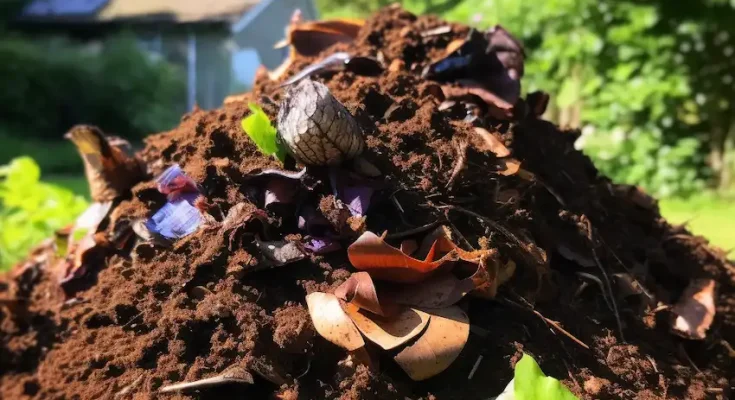Compost: The Gardener’s Gold
Welcome to the world of composting – a simple and rewarding practice that can significantly enhance your gardening experience. Often hailed as a gardener’s best friend, compost is a rich, nutrient-dense substance that can transform your garden. It’s an all-purpose miracle for nourishing flowers, trees, shrubs, and vegetables, and it’s surprisingly easy to create right in your backyard.
Breaking It Down: The Basics of Compost Making
At its core, composting is about breaking down organic matter into a form that plants can easily use. The decomposed material is packed with slow-releasing nutrients, providing your plants with a steady diet of what they need, when they need it. Compost can also improve soil structure, helping heavy clay soils drain better and sandy soils retain water more effectively.
The Simple Method: Composting Made Easy
Contrary to what you might find in gardening forums, composting doesn’t have to be complex. Here’s a straightforward approach that has been proven effective:
- The Four Essentials: For successful composting, you need green materials (like kitchen scraps and grass clippings) for nitrogen, brown materials (like cardboard and dry leaves) for carbon, moisture, and air. These elements invite beneficial bacteria, which are crucial for breaking down the materials.
- What to Include: Kitchen scraps from plants (like fruit peels and vegetable leftovers) are excellent. Grass clippings supercharge your compost with nitrogen. Coffee grounds can also be a great addition. When it comes to brown materials, think of items like shredded newspaper, cardboard without paint or tape, and sawdust.
- What to Avoid: Steer clear of glossy papers and materials with chemicals. Also, avoid non-plant-based items like meats and cheeses, as they can attract unwanted pests and take longer to decompose.
- Building Your Pile: Start by layering brown and green materials. Don’t worry too much about exact ratios; a rough 50/50 mix by volume is a good starting point. Remember to keep the pile moist (like a wrung-out sponge) and turn it regularly to introduce air and prevent materials from matting together.
- Location and Management: If possible, keep your compost pile directly on the ground to encourage worms and other beneficial organisms to participate in the breakdown process. Managing multiple piles can be helpful – one for adding new material, another that’s decomposing, and a third that’s ready to use.
The Composting Journey: Patience and Observation
Creating compost is an ongoing process that requires patience and a bit of trial and error. Don’t stress about getting everything perfect. Nature has a way of balancing things out over time. Regularly turn your compost and observe how it changes. Adjust your green and brown materials as needed, and make sure the pile stays moist but not waterlogged.
The Reward: Rich, Nutritious Compost
Over time, your pile will transform into a dark, crumbly, earth-smelling compost – the perfect food for your garden. It’s a satisfying conclusion to a process that not only benefits your plants but also contributes positively to the environment by recycling organic waste.
The Joy of Composting
Composting is a journey that teaches you about the natural cycle of growth, decay, and renewal. It’s a fundamental practice for any gardener looking to create a sustainable, thriving garden. With these simple steps, you’re well on your way to creating ‘black gold’ that will enrich your soil and bring vitality to your garden.



